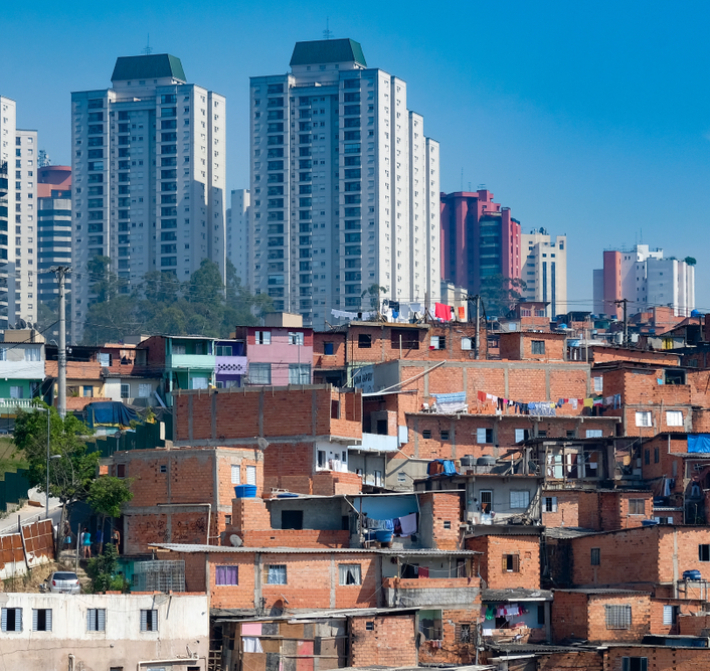
This was written by the World Economic Forum and we’d like to recommend it to all disaster risk practitioners and business continuity specialists, especially those with an interest in risks that are emerging and developing at the strategic and global scale. That is to say, the big risks that will reach down and start to influence local risk landscapes in the relatively near future – if they haven’t already begun to do so. It’s a big document, and a very well written one. We are writing this EPC Note on it in the hope of giving you a taster and an interest in delving into it in a bit more detail.
We’ll start with some points from the WEP President, which are worth starting with and quoting at length:
'This is a globalized world, as a result of which historic reductions in global poverty have been achieved. But it is also increasingly clear that change is needed. Polarization is on the rise in many countries. In some cases, the social contracts that hold societies together are fraying. This is an era of unparalleled resources and technological advancement, but for many people it is also an era of insecurity.'
This is a neat quote because it brings the report’s focus down from its main concerns (which are macro-economic trends) and right into the domain of societal issues and consequences that we will have to deal with at ground level in our communities.
In some respects it’s a bleak picture. It points to the need for an increase in the means and the will to tackle big risk issues internationally and co-operatively, before they cause irreversible damage. But the evidence suggests that both the means and the will are actually diminishing.
And this matters to us. Globalisation has done some good, but it also reaches down and affects local communities directly – and visibly – in less beneficial ways. It is not an economist’s abstraction, but a reality which is shaping our local risk landscapes today. It’s virtually beyond the control of any single government and it is not something international organisations have been very good at influencing. In fact, they are becoming less and less effective. This is why the report asks if we are 'sleepwalking into a crisis'.
The potential crises it focuses on grouped in a number of families of risks. The first is the possibility of tension and conflict of various types between states, caused by 'deepening fissures in the international system'. The report points out the increasing (and increasingly visible) tension between a globalised economy and localised, increasingly nationalistic politics. This is not only creating security risks; it is also limiting our collective ability to address those emerging risks (like climate change) that absolutely need transnational collaboration now.
Which brings us to the second group of risks, which are environmental. Climate change is the big one here, of course, but extreme weather is important more generally. The report also discusses the impact of declining biodiversity and its impact on the human food chain. Technological vulnerability is the third group, and the prevalence of cyber risks bears that out. The next generation of artificial intelligence will compound those threats and our vulnerabilities.
So far, so big picture. But the next group brings it on home for local practitioners and communities. It also goes in hard; 'for many people, this is an increasingly anxious, unhappy and lonely world' - a state brought about by 'lack of control in the face of uncertainty'. This clearly relates to what many see as the increasingly polarised and divisive nature of society. The symptoms are visible almost everywhere you look, and collectively present themselves in communities with declining social cohesion and antagonistic politics – in what one writer has called the 'Age of Anger'. This directly affects the national and local landscapes of risk and every horizon scanner should be looking at this.
Finally, it’s worth pointing out that although these risks are mainly perceived as ones that the next generation will inherit (if we don’t mitigate them now), there is also the possibility of events or changes acting as catalysts that could rapidly escalate a risk and foreshorten the time until it impacts. Minds over focused on the here and now, at the expense of constructive imagination, might be the main problem.
It’s purely a personal view that this sort of thinking is necessary for a variety of reasons, but not least because so much risk assessment and management is locked by its nature into formulae, process and modelling techniques that foster tinkering and incremental change – not leaps of the imagination. The short time frames we tend to use in these processes don’t help – they help to fixate us on the immediate future, at the expense of immediate action needed to mitigate risks that are clearly visible, increasingly well understood but a 'comfortable' (?) distance away.
The whole report can be downloaded from here.
Recognising that it is a bit of a mammoth read, the shorter approach would be to read the preface, executive summary and then the section called Future Shocks. That will give you the main ideas and quite a lot to think about.
You might also connect this with our last EPC paper, freely available here.
The Insight Team